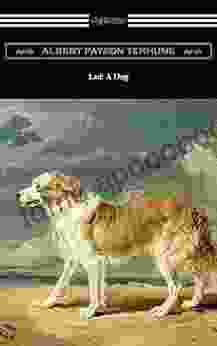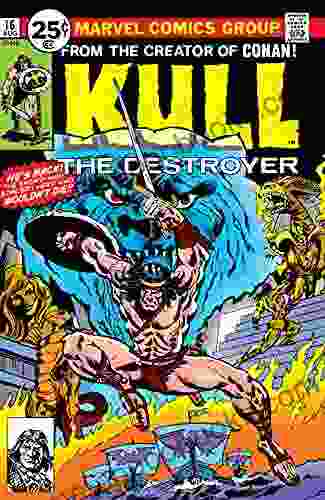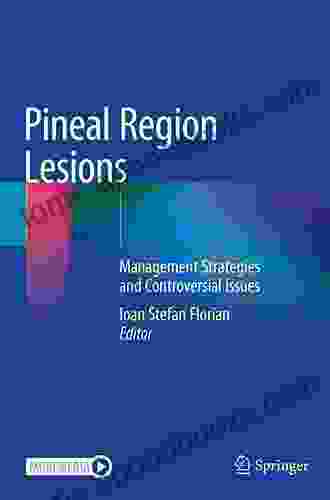Pineal Region Lesions: Unraveling the Controversies and Guiding Management Strategies

Pineal region lesions, encompassing tumors and cysts, are relatively uncommon but pose unique challenges in diagnosis and management due to their complex neuroanatomical location deep within the brain. This comprehensive guide delves into the intricacies of pineal region lesions, highlighting the latest research, controversial issues, and evidence-based management strategies to assist healthcare professionals in making informed and optimal treatment decisions.
The exact etiology of pineal region lesions remains uncertain, although various genetic, environmental, and hormonal factors are implicated. Pineal gland tumors, the most common type of pineal region lesion, can be divided into two main categories: pineal parenchymal tumors and germ cell tumors.
Pineal parenchymal tumors arise from the pineal gland itself and include pinealomas and pineocytomas. These tumors are typically slow-growing, well-circumscribed, and may secrete hormones such as melatonin.
Pineal Region Lesions: Management Strategies and Controversial Issuesby Louise Allen5 out of 5
Language : English File size : 69671 KB Text-to-Speech : Enabled Screen Reader : Supported Enhanced typesetting : Enabled Print length : 476 pages Germ cell tumors originate from primordial germ cells that have migrated to the pineal gland during embryonic development. They are classified into various subtypes, including germinomas, embryonal carcinomas, and yolk sac tumors.
Pineal cysts, on the other hand, are benign fluid-filled sacs that can occur within the pineal gland. They are often asymptomatic but can cause symptoms such as headache, nausea, and visual disturbances if they compress surrounding structures.
The clinical manifestations of pineal region lesions vary depending on the size, location, and nature of the lesion. Common symptoms include:
- Headache
- Nausea and vomiting
- Visual disturbances (e.g., blurred vision, double vision)
- Hydrocephalus (accumulation of cerebrospinal fluid within the brain)
- Endocrine dysfunction (e.g., precocious puberty, amenorrhea)
- Parinaud syndrome (vertical gaze palsy and pupillary light-near dissociation)
Neuroimaging plays a crucial role in the diagnosis and evaluation of pineal region lesions. Magnetic resonance imaging (MRI) with gadolinium contrast is the preferred imaging modality, providing detailed anatomical information and helping differentiate between tumors and cysts.
- Pinealomas appear as isointense to hypointense on T1-weighted MRI and hyperintense on T2-weighted MRI, with heterogeneous contrast enhancement.
- Pineocytomas exhibit similar imaging characteristics to pinealomas but may be more exophytic and have a more heterogeneous appearance.
- Germ cell tumors typically show hyperintensity on both T1- and T2-weighted MRI, with heterogeneous contrast enhancement. They may also exhibit areas of necrosis or hemorrhage.
- Pineal cysts appear as well-circumscribed, round or oval lesions with a hypointense rim on T1-weighted MRI and hyperintensity on T2-weighted MRI. They do not typically enhance with gadolinium contrast.
Several controversial issues surround the management of pineal region lesions, including:
- Role of surgery: The extent of surgical resection for pineal region tumors remains a matter of debate. Some surgeons advocate for gross total resection, while others favor a more conservative approach to minimize the risk of complications.
- Radiotherapy modalities: Both external beam radiotherapy and stereotactic radiosurgery (SRS) are used for treating pineal region tumors, but the optimal modality and dose remain uncertain.
- Chemotherapy regimens: The role of chemotherapy in the treatment of pineal region tumors is still being investigated, with various regimens being evaluated for efficacy and safety.
The management of pineal region lesions depends on the specific characteristics of the lesion, including its size, location, and histological type.
Asymptomatic lesions: Small, asymptomatic lesions may not require immediate intervention and can be monitored with regular neuroimaging follow-up.
Symptomatic tumors: Symptomatic pineal region tumors typically require treatment to alleviate symptoms and prevent further complications. Treatment options include surgery, radiotherapy, and chemotherapy.
Cysts: Pineal cysts that cause symptoms or hydrocephalus may require surgical drainage or fenestration to restore cerebrospinal fluid flow.
- Endoscopic approaches: Endoscopic surgery is a minimally invasive technique that allows surgeons to access the pineal region through the nose and sinuses. It is particularly useful for treating small lesions and draining cysts.
- Microscopic approaches: Microscopic surgery involves opening the skull to remove the lesion. It is used for larger lesions or those located in deeper regions of the brain.
- Stereotactic approaches: Stereotactic surgery utilizes a computer-guided system to plan and execute surgical procedures with high precision. It is often used for biopsy and resection of deep-seated lesions.
- External beam radiotherapy: External beam radiotherapy delivers radiation to the tumor from outside the body. It is typically used for larger lesions or those that cannot be completely resected surgically.
- Stereotactic radiosurgery (SRS): SRS delivers a single, high dose of radiation to the tumor with extreme precision. It is often used for treating small lesions, recurrent tumors, or those located in critical areas of the brain.
Chemotherapy involves the use of cytotoxic drugs to kill cancer cells. It is typically used in combination with surgery or radiotherapy for pineal region tumors that are unresponsive to other treatments.
Pineal region lesions are complex and challenging conditions that require a multidisciplinary approach to management. Through a thorough understanding of the etiology, pathophysiology, and clinical presentation of these lesions, healthcare professionals can tailor treatment strategies to optimize patient outcomes.
While controversies surround certain aspects of management, ongoing research and collaboration among experts continue to refine our understanding and improve the care of patients with pineal region lesions. By staying abreast of the latest developments and advancements, healthcare professionals can provide informed and evidence-based care to these patients.
5 out of 5
| Language | : | English |
| File size | : | 69671 KB |
| Text-to-Speech | : | Enabled |
| Screen Reader | : | Supported |
| Enhanced typesetting | : | Enabled |
| Print length | : | 476 pages |
Do you want to contribute by writing guest posts on this blog?
Please contact us and send us a resume of previous articles that you have written.
 Book
Book Novel
Novel Page
Page Chapter
Chapter Text
Text Story
Story Genre
Genre Reader
Reader Library
Library Paperback
Paperback E-book
E-book Magazine
Magazine Newspaper
Newspaper Paragraph
Paragraph Sentence
Sentence Bookmark
Bookmark Shelf
Shelf Glossary
Glossary Bibliography
Bibliography Foreword
Foreword Preface
Preface Synopsis
Synopsis Annotation
Annotation Footnote
Footnote Manuscript
Manuscript Scroll
Scroll Codex
Codex Tome
Tome Bestseller
Bestseller Classics
Classics Library card
Library card Narrative
Narrative Biography
Biography Autobiography
Autobiography Memoir
Memoir Reference
Reference Encyclopedia
Encyclopedia Arbor Winter Barrow
Arbor Winter Barrow John Demos
John Demos Autumn Reign
Autumn Reign Ashley Rosebloom
Ashley Rosebloom Laura Boss
Laura Boss Gregg Michaelsen
Gregg Michaelsen Annette Vegas
Annette Vegas Ayesha Siddiqa
Ayesha Siddiqa Audiolearn Content Team
Audiolearn Content Team Antonia Bifulco
Antonia Bifulco Hans Wilhelm Alt
Hans Wilhelm Alt Tyler Dawn Rosenquist
Tyler Dawn Rosenquist Aurora Hanson
Aurora Hanson Simon Worrall
Simon Worrall Christine Manzari
Christine Manzari Sheena Harris
Sheena Harris L D K Johnson
L D K Johnson Arnold Chang
Arnold Chang Audrey Niffenegger
Audrey Niffenegger Bradley C S Watson
Bradley C S Watson
Light bulbAdvertise smarter! Our strategic ad space ensures maximum exposure. Reserve your spot today!

 Colt SimmonsBind the Soul Steel Stone: A Literary Odyssey into the Depths of Magic and...
Colt SimmonsBind the Soul Steel Stone: A Literary Odyssey into the Depths of Magic and... Ismael HayesFollow ·8.4k
Ismael HayesFollow ·8.4k Vincent MitchellFollow ·2.9k
Vincent MitchellFollow ·2.9k Abe MitchellFollow ·17.1k
Abe MitchellFollow ·17.1k Ike BellFollow ·10.1k
Ike BellFollow ·10.1k Colt SimmonsFollow ·19.4k
Colt SimmonsFollow ·19.4k Percy Bysshe ShelleyFollow ·16.4k
Percy Bysshe ShelleyFollow ·16.4k Casey BellFollow ·19k
Casey BellFollow ·19k Ashton ReedFollow ·19k
Ashton ReedFollow ·19k

 Gabriel Garcia Marquez
Gabriel Garcia MarquezLad Dog Baby Professor: The Perfect Book for Your Child
Lad Dog Baby...

 Fredrick Cox
Fredrick CoxAn Excerpt With Fifty Ways To Help Animals Promo Books:...
: Embracing Animal...

 Kelly Blair
Kelly Blair5th Grade US History: Famous US Authors: Fifth Grade...
Step into a captivating world of historical...

 Natsume Sōseki
Natsume SōsekiKull the Destroyer: A Timeless Tale of Sword and Sorcery
The Creation of a...

 Jim Cox
Jim CoxDas Ist Supertoll: Unlocking the Magic of German for Kids
Immersive Learning with...

 Bruce Snyder
Bruce SnyderUnlock the World of Quilting for Kids: Discover "Quick...
Are you ready to embark on a delightful...
5 out of 5
| Language | : | English |
| File size | : | 69671 KB |
| Text-to-Speech | : | Enabled |
| Screen Reader | : | Supported |
| Enhanced typesetting | : | Enabled |
| Print length | : | 476 pages |










